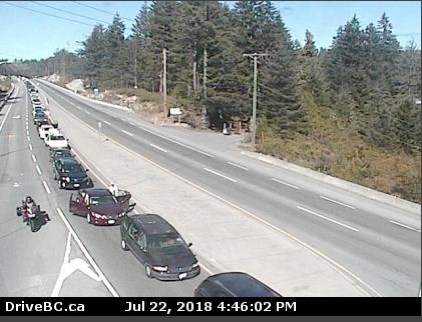Hardly a week goes by without another story about the Malahat.
This includes coverage of accidents, road closures and the existential puzzle posed by the clogged artery that 25,000 people rely on daily to get to work, school, entertainment and health care.
Lately, the coverage has been focused on watershed concerns: The government is examining a possible emergency alternative route for the highway, and the Capital Regional District is adamant that this will imperil the watershed, which is the sole source of drinking water for 350,000 people in the region.
So far, the solutions being brought to the table feature a fragmented approach to a complex problem that in fact calls for a collaborative solution that accounts for not just the well-being of Greater Victoria, but also recognizes the interconnectivity of the communities and economies stretching from the tip of the harbour outside the legislature all the way to Ladysmith and beyond.
A streamlined, sustainable transportation network between Greater Victoria and the rest of the Island is essential. As a critical piece of infrastructure, the Malahat is also central to our economy and the movement of people, goods and services. To say that this highway is important would be an understatement.
Of course, this is not the only challenge our Island communities face that is exacerbated by poor transportation planning. Langford’s development boom has led to an increasing bottleneck of infrastructure needs.
Ongoing drought and water contamination have highlighted the critical need for watershed protection across the Island.
Lack of a public and free-flowing transportation network stifles economic growth by limiting access to education and employment opportunities. Air quality is also a problem — and in Cowichan, where Island Health reported admissions rates for children with respiratory diseases averaged 70 per cent higher than provincial rates for the period 1998 to 2012 — it is well documented that 70 per cent of our emissions are caused by motor vehicles.
In other words, everything is related, and any single, simple solution would offer only a temporary fix at best. We already know this. For years, we’ve watched potential solutions to the Malahat transportation problem be discarded out of hand: a bridge over the Saanich Inlet, too expensive; revitalizing the E&N corridor, too expensive.
But what about the cost to the economy for lost time when the Malahat is closed and workers can’t clock in, people miss their appointments or flights leave the ground with empty seats?
It is time we reframe the Malahat problem to be an inclusive discussion around transportation. Instead at looking at one particular issue or one particular region, we need a collaborative, inter-regional effort. Yes, we have to consider the impacts on the CRD’s watershed — and we also have to look at the challenge faced by Island residents each time the highway closes.
We have to evaluate transportation issues with climate and air quality in mind, rather than encouraging increased use of single-passenger vehicles. We need a long-term transportation vision not only for a single city or district, but for the entire south Island.
And, if we are going to reject solutions on the basis of cost alone, we have to evaluate the costs incurred by Vancouver Island communities when they are cut off from essential services and the lost economic output of missed work.
All regions and stakeholders must come to the table and work together as collaborators with shared goals. While these discussions occur, we need to take action on interim solutions — by immediately improving transit services between Victoria and Nanaimo. Each bus can take as many as 60 cars off the road, reducing congestion and emissions while providing safer and more affordable transportation to those who need it. High-volume passenger-ferry service between Cowichan and Saanich, with connecting transit on each site, would provide an alternative for commuters, as well as relief when the Malahat is temporarily closed.
These concerns will not simply go away. The most recent Statistics Canada census data in 2017 found that since 2011, the population of metropolitan Victoria grew 6.7 per cent, outpacing the national growth rate of five per cent and B.C.’s overall rate of 5.6 per cent. Much of this growth is happening in Langford and along the West Shore, unplanned and unco-ordinated in the context of the surrounding areas. We have to consider that context to ensure we are providing infrastructure to support these communities.
The possible solutions to our Island’s transportation challenges are plentiful. Considered with all regions in mind, we have an opportunity for a creative and effective multi-faceted transportation system on Vancouver Island — one that works for all of us.
Sonia Furstenau is the Green Party MLA for Cowichan Valley.



